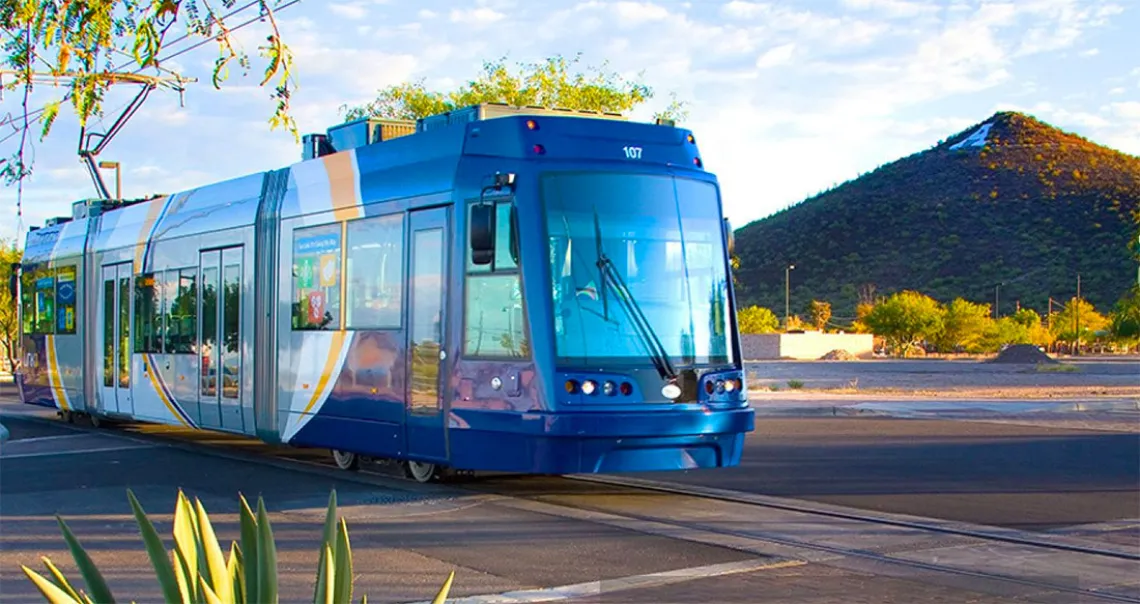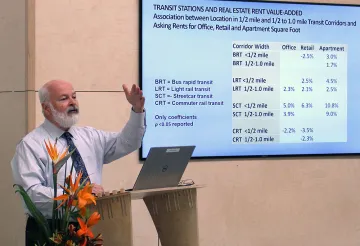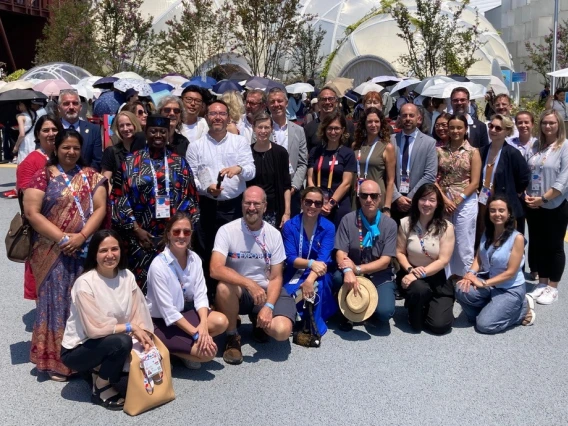Planning Professor Arthur C. Nelson Shares Analysis and Lessons from Development around Tucson’s Sun Link Modern Streetcar

Analysis of how adjacent commercial real estate rents are impacted by Tucson’s Sun Link Modern Streetcar conducted by Arthur C. Nelson, Professor of Planning and Real Estate Development in the College of Architecture, Planning and Landscape Architecture at the University of Arizona, was featured in the April 2020 issue of TREND Report, which serves Tucson and Southern Arizona.
The research, led by Nelson and supported by Robert Hibberd, a UArizona doctoral student in geography and urban planning, as well as a team of CAPLA Master of Real Estate Development and Master’s in Urban Planning students, evaluates how market rents have responded to the streetcar’s 21 stations on its 3.9-mile route.
The team used CoStar data to analyze real estate rent premiums from the streetcar stations outward approximately a mile for office, retail and multifamily rental properties.
“Overall, we find that people-serving land uses such as retail and apartments push offices to locations beyond about a half kilometers,” says Nelson. “Retail clearly dominates the rent premium in the closest distance band.”

Professor of Planning and Real Estate Development Arthur C. Nelson
The analysis, which is part of a larger national study on development outcomes associated with streetcar station proximity, demonstrates how “the Tucson streetcar is a real estate and economic development success, indeed in some respects being a national leader,” writes Nelson in Trend Report. “The success is not accidental—it was designed to be successful.”
How so? Because the Sun Link line connects a major medical center with one of the nation’s largest universities, two commercial corridors, downtown Tucson, and “a redevelopment area with one of the nation’s largest supplies of vacant land accessible to transit.”
For streetcar lines to be successful, he says, “our results suggest that planning is needed with investment partnerships to identify the best places for moderately high to high density housing. Local serving retail also needs to be in the mix.” And residents of the higher-density housing “must be connected to concentrations of jobs.”
Nelson joined CAPLA in 2014 after serving as presidential professor and director of the Metropolitan Research Center at the University of Utah. As the author of nearly 30 books and more than 400 other scholarly publications and principal investigator or co-principal investigator of more than $50 million in grants, Nelson is ranked 9th nationally among more than 1,000 planning professors in the quality of published work based on scientific metrics.
Sun Link photo courtesy City of Tucson.



